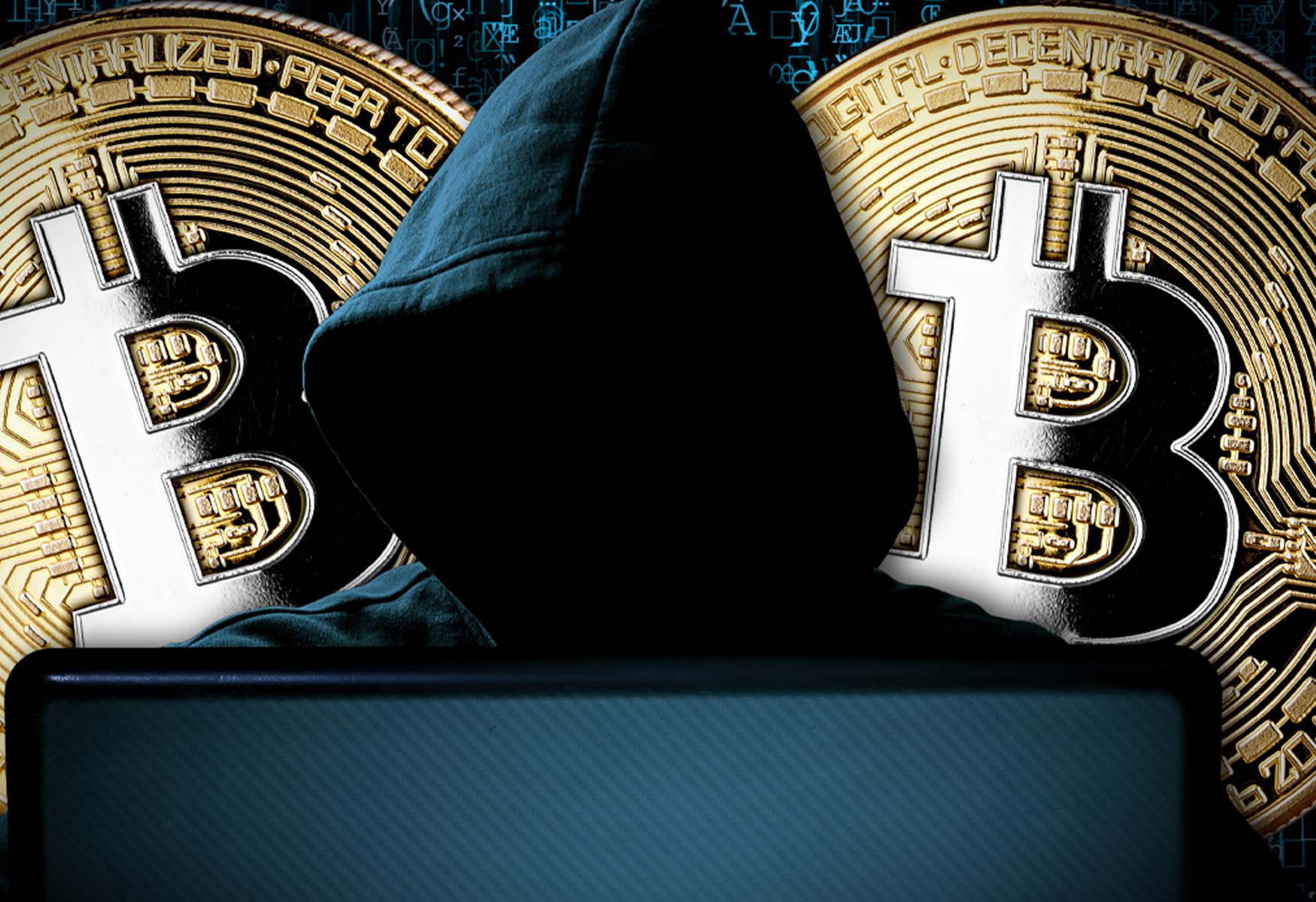Introduction
Cryptocurrency has emerged as a revolutionary form of digital currency, empowering individuals to take control of their finances and bypass traditional banking systems. However, as the popularity of cryptocurrencies has grown, so too has the attraction for hackers and fraudsters searching for an opportunity to exploit vulnerabilities in the digital realm.
In recent years, a disturbing trend has emerged with teenagers harnessing their technological skills to steal cryptocurrencies, leaving many in the industry bewildered and concerned. These young hackers, armed with advanced coding knowledge and a digital know-how, have become a formidable force posing significant threats to the security of cryptocurrency holders.
This article aims to shed light on the rise of teenage hackers in the cryptocurrency world and delve into a specific case study that sent shockwaves through the industry. We will explore how these young perpetrators execute their schemes, the aftermath they face, and the lessons we can learn to protect our own cryptocurrency investments.
It is crucial to understand the threats posed by teenage hackers in the cryptocurrency ecosystem, as their actions not only compromise the security and financial stability of individuals but also undermine public trust in digital currencies as a whole. By raising awareness about this issue, we can take precautionary measures and protect ourselves from potential attacks.
Without further ado, let us delve into the world of teenage hackers and their shrewd tactics for stealing cryptocurrency.
Background on Cryptocurrency
Cryptocurrency, a digital or virtual form of currency, has gained immense popularity in recent years due to its decentralized nature and the potential for high returns on investment. The most well-known cryptocurrency, Bitcoin, was introduced in 2009 by an anonymous person or group under the pseudonym Satoshi Nakamoto.
Unlike traditional fiat currencies that are regulated by banks and governments, cryptocurrency operates through a technology called blockchain. This decentralized ledger system ensures transparency, immutability, and security in transactions. It allows individuals to make peer-to-peer transactions without the need for an intermediary, such as a bank.
The appeal of cryptocurrency lies in its potential for massive gains. Many early investors and adopters of Bitcoin have become millionaires as its value skyrocketed over time. This significant growth, combined with the ease of trading and the lure of anonymity, has attracted a diverse range of individuals to invest in this new form of digital currency.
However, the decentralized nature of cryptocurrencies also opens the door for vulnerabilities and cyber threats. Hackers are constantly searching for ways to exploit weaknesses in the system, whether it be targeting cryptocurrency exchanges, hacking into individual wallets, or resorting to phishing scams.
To ensure the security of cryptocurrency transactions, sophisticated encryption algorithms are used to protect digital wallets and verify authenticity. Despite these measures, teenage hackers have shown an alarming ability to breach these security barriers and steal cryptocurrency.
Now, let’s delve into the rise of teenage hackers in the world of cryptocurrency and explore their motivations and methods in greater detail.
The Rise of Teenage Hackers
In recent years, there has been a concerning rise in the involvement of teenagers in hacking incidents related to cryptocurrency. These young individuals, often referred to as “script kiddies” or “teenage hackers,” possess a high level of technical expertise, allowing them to exploit vulnerabilities in the digital infrastructure.
One major factor contributing to the rise of teenage hackers is the increasing accessibility of information and resources related to coding and hacking techniques. With the abundance of online tutorials, forums, and open-source tools, teenagers can easily educate themselves in coding languages and cybersecurity practices.
Furthermore, the allure of fame and financial gain plays a significant role in attracting teenagers to engage in hacking activities. The media frequently highlights stories of young hackers who have successfully stolen large amounts of cryptocurrency, leading to a distorted perception that hacking can bring immense wealth and notoriety.
Another crucial factor is the growing demand for skilled cybersecurity professionals. As the world becomes more digitized, the need for individuals with advanced knowledge of cybersecurity increases. Instead of using their skills for legitimate purposes, some teenagers are lured into the world of hacking due to the lack of opportunities to apply their expertise in a legal and positive manner.
Add to this the peer pressure and influence within hacker communities, where teenagers may seek validation and recognition from their peers. By showcasing their hacking skills and successfully breaching security systems, they gain a sense of accomplishment and a reputation within these communities.
It is essential to note that not all teenagers involved in hacking activities have malicious intentions. Some are driven by curiosity and a desire to test their skills. However, the consequences of their actions can be significant and damaging to individuals and the cryptocurrency industry as a whole.
Through their exploits, teenage hackers have proven that age is not a barrier to technological expertise and the ability to cause serious harm. The next section will examine a specific case study that shook the cryptocurrency world and highlighted the actions of these young perpetrators.
Case Study: The Event That Shocked the Crypto World
One event that sent shockwaves throughout the cryptocurrency industry and drew attention to the capabilities of teenage hackers was the infamous “Crypto Exchange Heist” that took place in [year]. A group of teenage hackers orchestrated a sophisticated attack on a prominent cryptocurrency exchange, resulting in the theft of millions of dollars’ worth of cryptocurrencies.
The hackers, ranging in age from [age range], exploited a vulnerability in the exchange’s security infrastructure, allowing them to gain unauthorized access to user accounts and manipulate transactions. They skillfully covered their tracks, making it difficult for authorities to trace the stolen funds.
What made this case even more startling was the audacity of the teenage hackers. They flaunted their illegal activities on social media platforms and openly bragged about their success, taunting law enforcement and the cryptocurrency community. This brazen behavior not only attracted attention but also intensified the urgency to bring the young perpetrators to justice.
The impact of the heist reverberated throughout the crypto world, causing investors to question the security of their digital assets and prompting exchanges to implement stricter security measures. The incident also served as a wake-up call for regulators, highlighting the need for tighter regulations and cybersecurity protocols within the industry.
The investigation into the heist eventually led to the arrest and prosecution of the teenage hackers involved. They faced serious legal consequences for their actions, including charges of unauthorized access to computer systems, theft, and money laundering. The case served as a landmark example of the repercussions that await those who engage in hacking activities, regardless of their age.
It is important to recognize that the “Crypto Exchange Heist” is just one notable case among many instances where teenage hackers have exploited vulnerabilities within the cryptocurrency ecosystem. These incidents highlight the pressing need for continued vigilance and the implementation of robust security measures to safeguard digital assets.
In the next section, we will delve into the methods employed by these teenage hackers to perpetrate their crimes and breach the security barriers of cryptocurrency systems.
How Did the Teenager Do It?
The success of teenage hackers in stealing cryptocurrency largely stems from their deep knowledge of coding languages, cybersecurity vulnerabilities, and exploitation techniques. While each case may vary, there are several common methods these young perpetrators employ to breach the security measures of cryptocurrency systems.
One common approach is the use of phishing campaigns. Teenage hackers create fake websites or send out deceptive emails disguised as legitimate cryptocurrency platforms or services. Unsuspecting users are tricked into entering their login credentials or private keys, unknowingly providing the hackers with access to their accounts. These stolen credentials can then be used to transfer funds out of the victim’s wallet.
Another method employed by teenage hackers is exploiting vulnerabilities in cryptocurrency exchange platforms. They meticulously analyze the exchange’s security mechanisms, searching for weaknesses in their coding or infrastructure. Once identified, they exploit these vulnerabilities to gain unauthorized access to user accounts or manipulate transaction data in their favor.
Social engineering is yet another technique used by these cunning hackers. They employ psychological manipulation to trick individuals into divulging sensitive information or granting them remote access to their devices. This can be achieved through impersonation, fake support calls, or other clever tactics that exploit people’s trust.
Furthermore, some teenage hackers have used malware and ransomware to target cryptocurrency users. They create and distribute malicious software that infects users’ devices, allowing them to monitor keystrokes, gain access to wallets, or encrypt files and demand a ransom in cryptocurrency for their release.
The wide availability of hacking tools and resources on the dark web also gives teenage hackers an advantage. They can purchase pre-built hacking frameworks, exploit kits, or even hire services from more experienced hackers, granting them access to powerful tools and methodologies.
It is worth mentioning that not all teenage hackers operate alone. Some form or join hacking groups, pooling their expertise and resources to execute more sophisticated attacks. The anonymity provided by online communities and encrypted messaging platforms allows them to collaborate and strategize their activities discreetly.
The methods employed by teenage hackers continuously evolve as they adapt to new security measures. To protect ourselves, it is crucial to stay informed about the latest cybersecurity trends, educate ourselves on best practices for securing cryptocurrency, and remain cautious when interacting with online platforms.
In the aftermath of their exploits, teenage hackers face legal consequences for their actions. We will explore the aftermath and legal ramifications in the next section.
Aftermath and Legal Consequences
The aftermath of the activities carried out by teenage hackers in the cryptocurrency world is marked by both financial and legal consequences. While these young perpetrators may initially revel in their success, the tide eventually turns against them as authorities and law enforcement agencies are determined to bring them to justice.
When teenage hackers are caught and their illegal activities are exposed, they face severe legal repercussions. The charges brought against them can include unauthorized access to computer systems, identity theft, money laundering, and even terrorism-related offenses, depending on the nature and extent of their crimes.
Prosecution of teenage hackers varies from country to country, but many legal systems consider their actions as serious offenses. The penalties they may face range from community service and probation to imprisonment, depending on the severity of the crimes committed and the age of the perpetrators.
In addition to the legal consequences, teenage hackers also suffer reputational damage. Once their identities are revealed, their actions are scrutinized by the public, media, and potential future employers. This notoriety can have long-lasting effects, hindering their academic and professional prospects.
Furthermore, the consequences extend beyond the individual hackers themselves. The victims of their attacks can experience significant financial losses, emotional distress, and a loss of trust in the cryptocurrency ecosystem. This underscores the necessity for robust security measures and the importance of raising awareness about the risks associated with cryptocurrency.
Over time, authorities and the cryptocurrency industry have become more adept at identifying and apprehending teenage hackers. Improved collaboration between law enforcement agencies, increased adoption of advanced cybersecurity measures, and the use of forensic techniques have made it more challenging for these young perpetrators to evade capture.
It is crucial to remember that rehabilitation is also an essential aspect of dealing with teenage hackers. While they must face the legal consequences of their actions, efforts should also be made to educate and redirect their skills towards constructive and lawful pursuits in the technology and cybersecurity fields.
The world of cryptocurrency continues to evolve, and with it comes new challenges and threats posed by teenage hackers. By staying informed and implementing robust security measures, we can better protect ourselves and contribute to the overall security of the cryptocurrency ecosystem.
In the next section, we will discuss the lessons we can learn from these incidents and explore steps to protect our own cryptocurrency investments.
Lessons Learned and Steps to Protect Your Cryptocurrency
The rise of teenage hackers in the cryptocurrency world serves as a stark reminder of the importance of safeguarding our digital assets. To protect our cryptocurrency investments, there are several lessons we can learn from the exploits of these young perpetrators and steps we can take to minimize the risks:
1. Education and Awareness:
Stay informed about the latest cybersecurity threats and best practices for securing cryptocurrency. Regularly educate yourself on topics such as phishing, malware, and social engineering to recognize and avoid potential scams.
2. Strong Passwords and Two-Factor Authentication:
Create complex passwords using a combination of uppercase and lowercase letters, numbers, and symbols. Enable two-factor authentication for all your cryptocurrency wallets and exchange accounts to provide an extra layer of security.
3. Use Hardware Wallets:
Consider using a hardware wallet, such as a USB device, for storing your cryptocurrency. Hardware wallets provide offline storage and are less susceptible to hacking attempts than online wallets.
4. Regularly Update Software:
Keep your devices and software up to date with the latest security patches and updates. Outdated software may contain vulnerabilities that hackers can exploit.
5. Be Cautious of Phishing Attempts:
Verify the authenticity of websites and emails before entering your login credentials or private keys. Be wary of unsolicited communication and double-check the email address or URL to ensure it is legitimate.
6. Secure Wi-Fi Connections:
Avoid accessing your cryptocurrency accounts or making transactions using public Wi-Fi networks. Use a secure and encrypted connection to protect your data from potential eavesdropping.
7. Diversify Crypto Holdings:
Consider diversifying your cryptocurrency holdings across multiple wallets and exchanges. This minimizes your risk exposure in case one platform is compromised.
8. Keep Private Keys Offline:
Safely store your private keys offline, preferably in a separate physical location. This reduces the risk of unauthorized access to your wallets.
9. Regularly Monitor Account Activity:
Keep a close eye on your cryptocurrency accounts and transactions. Promptly report any suspicious activity to the relevant authorities or platform administrators.
By implementing these measures and staying vigilant, you can significantly reduce the likelihood of falling victim to teenage hackers or any other malicious actors in the cryptocurrency world.
Now that we have discussed the lessons learned and the steps we can take to protect our assets, let’s conclude our exploration of teenage hackers in the cryptocurrency realm.
Conclusion
The rise of teenage hackers in the cryptocurrency world serves as a stark reminder of the ongoing battle between cybersecurity and cybercrime. These young perpetrators, armed with advanced coding skills and a thirst for fame and fortune, pose significant threats to the security of cryptocurrency holders and the public trust in digital currencies.
Through a case study and an examination of their methods, we have gained insights into how these teenage hackers operate and the impact of their actions. The aftermath and legal consequences highlight the serious implications they face for breaching the security of cryptocurrency systems.
However, these incidents also provide us with valuable lessons. By educating ourselves, implementing strong security measures, and staying vigilant, we can minimize the risks associated with owning and trading cryptocurrency.
The cryptocurrency industry continues to evolve, and with it, the challenges and threats posed by hackers. It is crucial for individuals, exchanges, and regulators to constantly adapt and improve cybersecurity practices to maintain trust and protect digital assets.
Furthermore, it is essential to consider the rehabilitation and redirection of teenage hackers’ skills towards lawful pursuits. By fostering an environment that encourages ethical hacking and providing opportunities for these individuals to use their talents for positive purposes, we can harness their potential and contribute to a safer digital landscape.
In conclusion, the rise of teenage hackers in the cryptocurrency world serves as a reminder of the importance of maintaining the security of our digital assets. By staying informed, implementing robust security measures, and fostering responsible use of technology, we can navigate the cryptocurrency landscape with confidence and safeguard our investments.

























